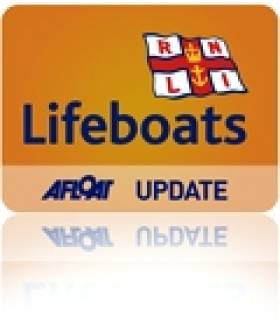Displaying items by tag: Sailing by the Lee
Rick Tomlinson Addresses 'Sailing By the Lee' Luncheon
Today's 'Sailing by the Lee' lunch in Cork in aid of the RNLI featured guest speaker Rick Tomlinson, the Round the World Photographer who hails from the Isle of Man.
The lunch began with a drinks reception sponsored by The Electric Bar and Restaurant of South Mall.
Tomlinson gave a 40 minute slide show that featured a selection of Antarctic images including maginificent wildlife photography. It was immediately clear to the 200 guests that not only does this photographer have a great eye but also a strong techincal ability, his shots ranging from 360 degree fisheye to telephoto lens shots taken from helicopters.
As always it was a packed attendance at the Maryborough hotel for the start of season function, organised by Kinsale's Susie Elliott. This years lunch included host RNLI Governor Peter Crowley, sailmaker Des McWilliam, Afloat.ie's Claire Bateman, Vinnie O'Shea, commodore of SCORA, Gary and Susan Horgan of Sovereigns Cup, Race officer Alan and Mary Crosbie and many, many more. Scroll down for photos (by Bob Bateman) below!
During the lunch, Peter Crowley paid a special tribute to Rick on his remarkable career, "I wish to acknowledge Rick's absolute dedication; commitment and enthusiasm in representing those connected to the sea, in bringing the thrills and excitement of the Volvo Ocean Race back to us at home and capturing the ongoing challenges and adventures of the international maritime community. Rick has also been most important to us over the years, as through his work, he has also captured with his talents the volunteer life saving work of the RNLI."
Rick Tomlinson is best known for capturing the Southern Ocean at its most treacherous from the decks of various yachts in the Whitbread Round the World Race/Volvo Ocean Race. Born in 1958, Rick grew up on the Isle of Man, where he established a serious interest in sailing. Rick's enthusiasm for photography began while he was boatbuilding and sailing. Yacht racing aside, Rick has extended his skills into expedition and project photography to such places as the Arctic and Antarctic, Chile, Alaska, Caribbean and Africa, together special assignments for the RNLI.
Speaking at the event, Kinsale RNLI Fundraising Secretary Susie Elliott stated, "It has been a remarkable year for Kinsale RNLI. Having opened our boathouse just over a year ago, we continue to work to raise the funds needed to meet the construction costs. Our sponsors and supporters for this year's event have been extremely generous and we are very grateful to them, particularly given the challenging economic climate.
Related Safety posts
RNLI Lifeboats in Ireland
Safety News
Rescue News from RNLI Lifeboats in Ireland
Coast Guard News from Ireland
Water Safety News from Ireland
Marine Casualty Investigation Board News
Marine Warnings





























































